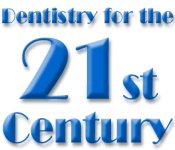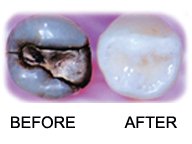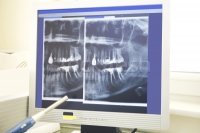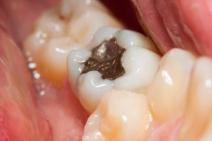|
Dental Mercury Information
An Overview of Dental Mercury Toxicity Issues dental mercury information  You have heard the expression “Mad as a hatter.” You have read about and seen character of the Mad Hatter in the “Alice in Wonderland” book and movies. But, do you know the origin of that term? You have heard the expression “Mad as a hatter.” You have read about and seen character of the Mad Hatter in the “Alice in Wonderland” book and movies. But, do you know the origin of that term?You have heard the expression “Quack” used for phony or unscrupulous doctors. Do you know where that expression came from? Both of those expressions have their roots in Mercury. Not the car, not the planet, but the elemental mercury that is also called “quicksilver.” Elemental mercury is a heavy metal that is one of the most toxic substances known to man, and its toxins are extremely difficult to remove from the body once they have been absorbed into the organs and tissues. Mercury is also known as quicksilver, and in Germany it is called “quackenslaber.” In the nineteenth century, dental products representatives from Germany came to the United States to persuade dentists of that period to use it in their amalgams, as it was a cheap and readily available bonding agent for fillings. However, many physicians and dentists at that time were well aware of the toxic properties of mercury, and would not promote its use in health tonics or dental fillings. They called these German mercury promoters, as well as the practitioners who used mercury, “Quacks,”--short for “quackenslaber.” It took the brainwashing of the American Dental Association, which was formed as a trade union to protect the pharmaceutical companies producing mercury amalgams and the dentists who used them, to gain acceptance for mercury amalgam fillings. In fact, many studies combined with intensive research over the years have proven that mercury fillings in a person’s mouth continuously release harmful toxic vapors, which can be absorbed by the brain. This vapor release increases greatly during the act of chewing, or when consuming hot beverages such as tea or coffee. Brain damage caused by breathing mercury vapors has been linked to Alzheimer’s disease, Parkinson’s, MS, depression, anxiety, and a host of other neurological and psychological disorders. Yet, the ADA says it’s OK for our fillings. Should you have mercury fillings? To this day a dentist may lose his or her license to practice if they tell patients that they should definitely not have mercury amalgam fillings. But, we can tell you this—if a mercury thermometer is dropped and broken on a school playground, the school must be evacuated and a Hazardous Materials Disposal team must be called in to properly clean it up and dispose of it. And, on a personal note, none of our dentists or staff members would ever have mercury amalgam fillings or allow them in their mouths. Toxic issues aside, mercury amalgam can discolor and darken, looking aesthetically horrible. Also, mercury amalgam has no real adhesion. Dentists are forced to drill away a lot of good, healthy tooth structure so that they can make a wedge-shaped opening that will hold the mercury amalgam in place.Mercury amalgam is very weak as a filling agent, and it weakens the tooth that it is placed into. Many times, mercury amalgam will crack and leak, or cause the tooth to crack (because it distorts the tooth’s shape as it is wedged into place) and that leakage will allow more bacteria, toxins, and infectious agents into the interior of the tooth. This, in turn, may lead to more serious dentistry being needed, such as root canals or even extractions. Then there is the issue of the mixed metals—silver, copper, tin and zinc—that make up the remainder of the filling. These mixed metals, when combined with the saliva in the mouth, can actually begin to generate electrical currents. This is called the “galvanic,” or battery effect. The electrical currents that are generated are detectable on sensitive voltage meters. These electric currents generate electromagnetic waves which may then interfere with normal brainwave activity. This can be detected in some patients on an EEG readout. (See the information sheet on “Mixed Metals in the Mouth” for more details on this subject.) Mercury amalgam is, for all these reasons, not recommended by our Center as a filling material. You are free to make your own choice in this matter, but if you want mercury fillings, you will have to look elsewhere, as we will not do them here. Our aim is to help protect and preserve your oral health, your teeth, and your smile—as well as your whole body’s health. |


A better, more comfortable and healthier way to fill teeth!

CLICK HERE to find out about our Laser Nerve Treatment, a way to avoid root canals!
 The term “amalgam” simply means “mixture.” An amalgam filling is a mixture of metals, usually silver, copper, tin, and zinc. However, these metals do not bond on their own to make a cohesive filling material, so mercury is used to dissolve them and bind them together. The mercury content of an amalgam filling is extremely high—roughly 50% of the entire filling compound is made up of this toxic element. It is supposedly harmless when combined with the other metals and placed as a filling, but yet it is still treated as hazardous material while the filling is being prepared outside the mouth.
The term “amalgam” simply means “mixture.” An amalgam filling is a mixture of metals, usually silver, copper, tin, and zinc. However, these metals do not bond on their own to make a cohesive filling material, so mercury is used to dissolve them and bind them together. The mercury content of an amalgam filling is extremely high—roughly 50% of the entire filling compound is made up of this toxic element. It is supposedly harmless when combined with the other metals and placed as a filling, but yet it is still treated as hazardous material while the filling is being prepared outside the mouth.